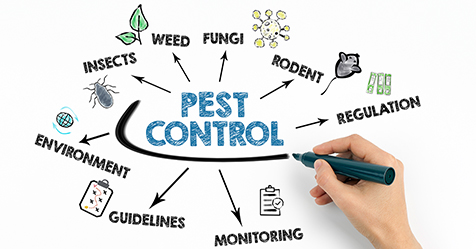Last month, we discussed two of the “Three Ps” of Sustainability — Planet & Profit — but a prime purpose in cleaning inside built environments is to “keep on” doing it without harm to People, the third P, and the one closest to home and affecting us “where we live.”
Some call it Health Intentional Cleaning, Cleaning for Health, and Renewable Cleaning, or Cleaning for People (CFP).
Q: But aren’t cleaning chemicals only present in small amounts and — since the “dose makes the poison” — basically harmless?
A: They are present in small amounts but the “dose makes the poison” argument is no longer strictly true since we now know, that in many cases, the little things are the big things in human health.
For example, hormones are found in parts per trillion in our body, and many chemicals mimic these; so, yes, tiny amounts of endocrine or hormone disrupting stuff matters.
You can’t see VOCs, viruses, bacteria, or endocrine or hormone disrupters — but they WILL affect your health if your “cleaning” program leaves them behind due to poor process, chemical warfare, and other sins of traditional “cleaning.”
This type of “cleaning” is the worst form of putting the cart before the horse, because sooner or later it makes people sick, and sick people cannot clean buildings or work in them very well — or long.
Then there are the custodians, staff and children in schools. Children can’t learn if they are sick or absent from school (note that K-12 schools cite asthma as the leading chronic cause of absenteeism among students).
Also, in true “cart-before-the-horse” irony, healthcare environments have been studied for “unhealthy” cleaning practices leading to respiratory and other issues among cleaning workers.
In the 2009 healthcare study Characterization of Occupational Exposures to Cleaning Products Used for Common Cleaning Tasks — downloaded from Harvard University’s DASH repository — researchers noted: “cleaning has been identified as an occupational risk because of an increased incidence of reported respiratory effects, such as asthma and asthma-like symptoms among cleaning workers …”
They further found “cleaning products used for common cleaning tasks were mixtures of many chemicals, including respiratory and dermal irritants and sensitizers. Examples of ingredients of concern include quaternary ammonium compounds, 2-butoxyethanol, and ethanolamines.”
They added: “Cleaning workers are at risk of acute and chronic inhalation exposures to volatile organic compounds (VOC) vapors and aerosols generated from product spraying, and dermal exposures mostly through hands…”
They concluded: “Cleaning products are mixtures of many chemical ingredients that may impact workers’ health through air and dermal exposures. Because cleaning exposures are a function of product formulations and product application procedures, a combination of product evaluation with workplace exposure assessment is critical in developing strategies for protecting workers from cleaning hazards.”
In other words, change your process, practice Health Intentional Cleaning, Renewable Cleaning, and Cleaning for People(CFP). What could make more sense?
For more information about Health Intentional Cleaning visit https://www.healthintentionalcleaning.org.
This special online series and its articles are sponsored by Advanced Vapor Technologies, LLC.


